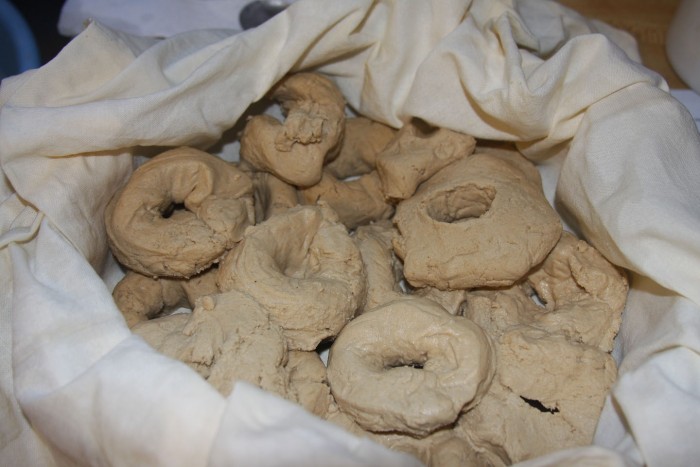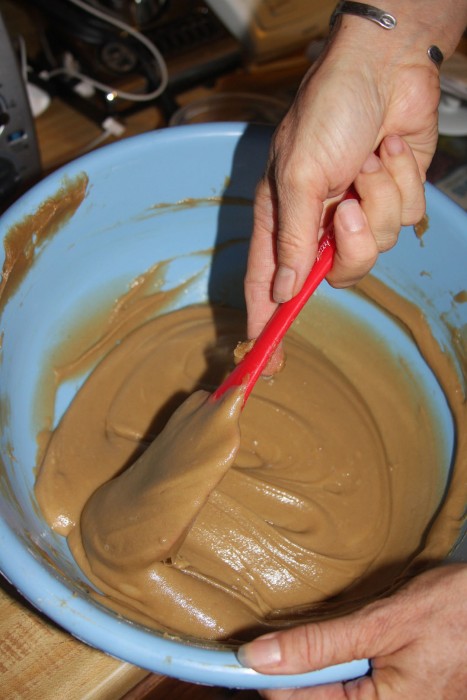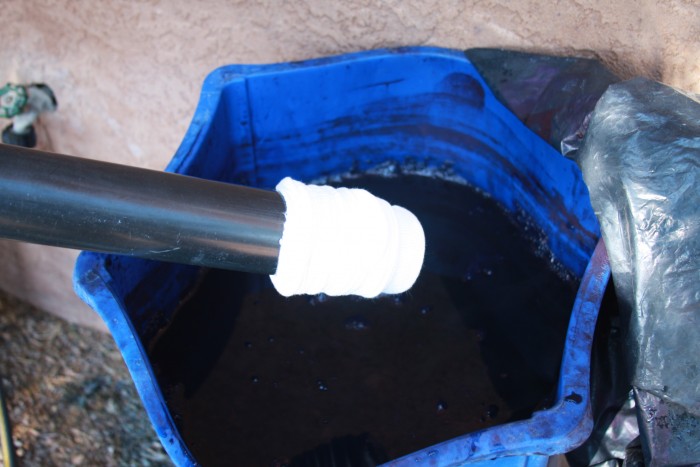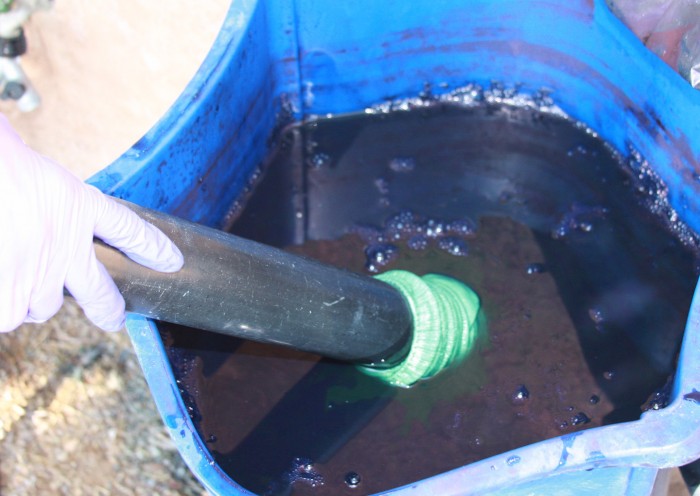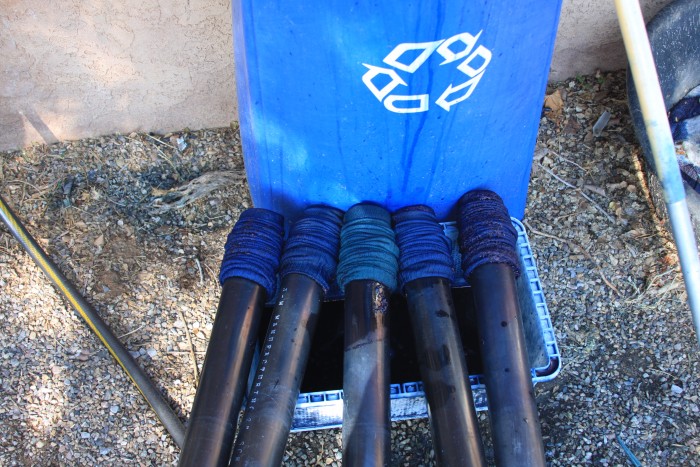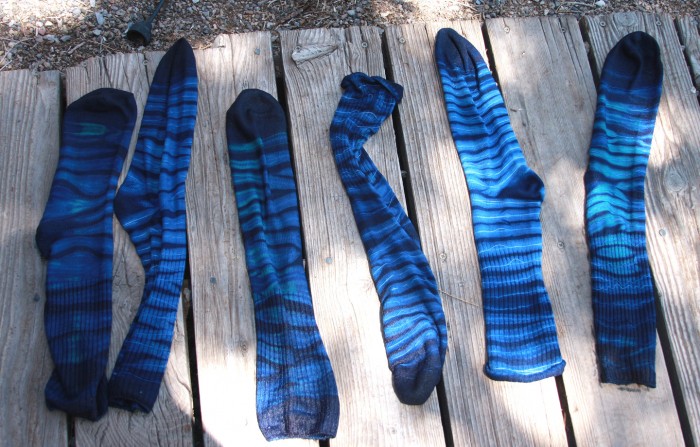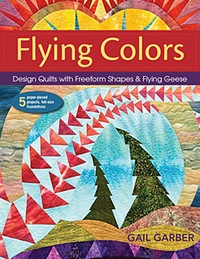My Indigo Vat
September 13th, 2012
I know I’ve been lax in posting to my blog lately! But, although I haven’t been posting, I have been doing! And, doing lots of different stuff! One of my favorite types of dyeing is making up an indigo vat to get those lovely shades of blue that only an indigo vat can achieve. I took a class from John Marshall a while back and with thee help of my good friend, Donna Barnitz, we cooked up a new vat in late July!
The next step is to mix up a batch of rice paste resist. After the first mix, we form donuts of dough and put them into the rice steamer.
Almost done now! After the steaming, we add a few more ingredients and stir it up into a smooth paste – ready to apply to the fabrics. We made stencils for pasting in a previous class with Karen Miller. I only made one stencil but Donna made several! Sorry, no images of the pasting part — I forgot to take photos. We pasted and pasted. And then set the pasted pieces aside to dry. Sometimes the pasting can take several days as we wait for one part to dry before pasting more on the same piece.
So, we began by dyeing socks! A good indigo vat has a wonderful, earthy smell and is oxygen free. Here, you see the white sock, either bamboo or cotton, scrunched up on a PVC tube.
When the fabrics are immersed into the vat, they turn an emerald shade of green.
Once they are pulled from the vat and exposed to oxygen, they turn that gorgeous shade of blue. To get a darker color, multiple dips are necessary.
Here are our first six socks, drying in the shade. I love this technique. Thanks, Donna, for thinking it up!


